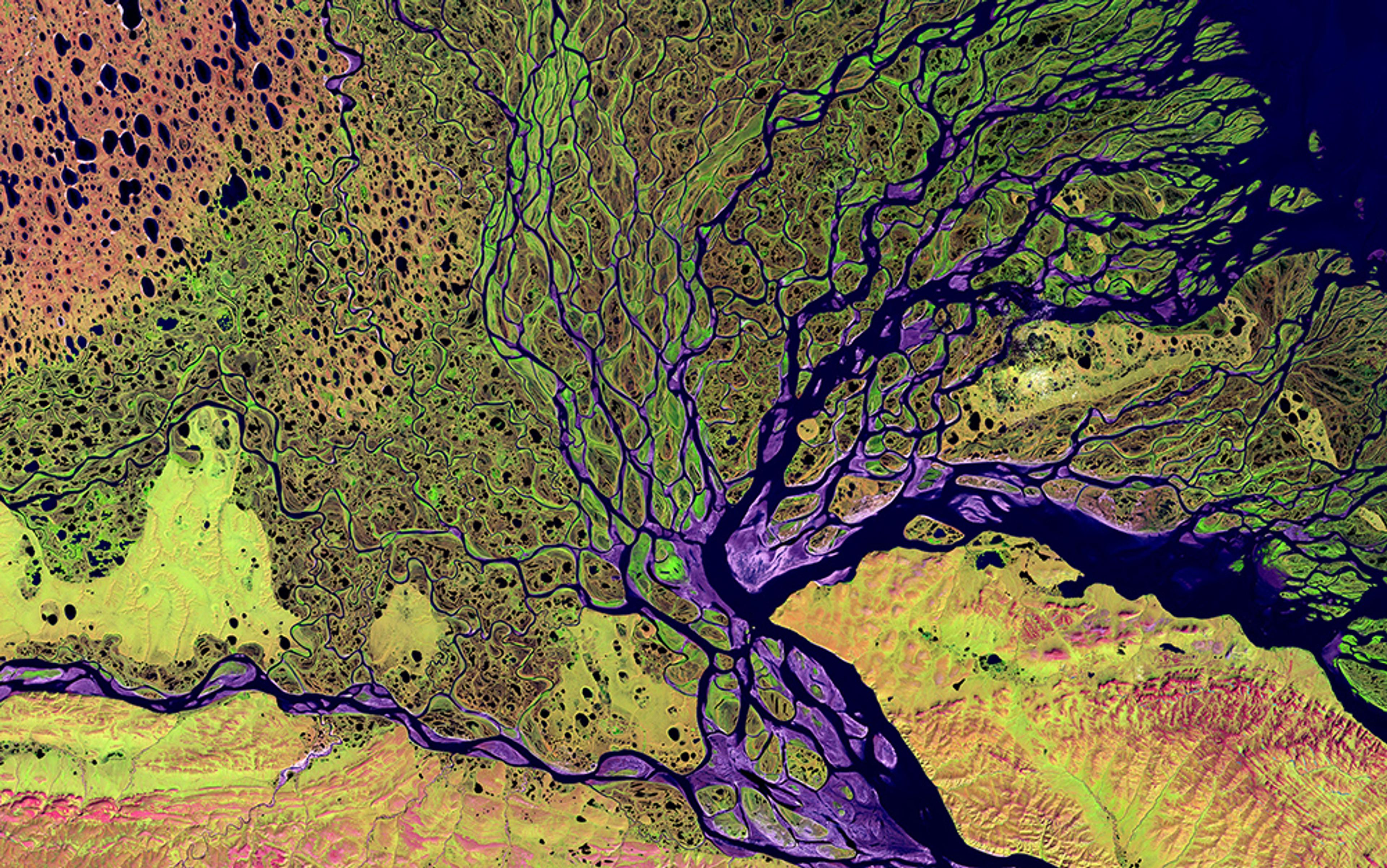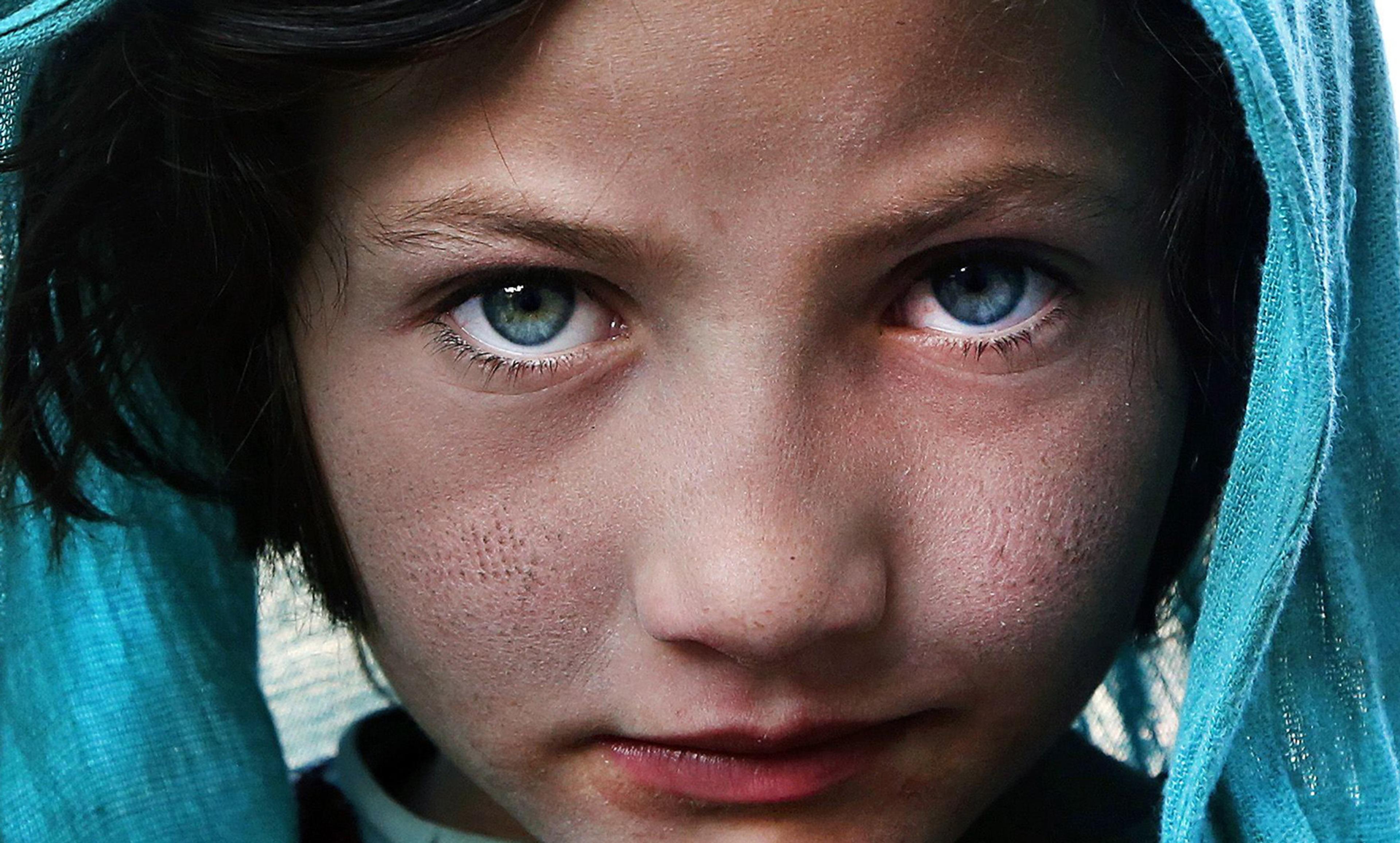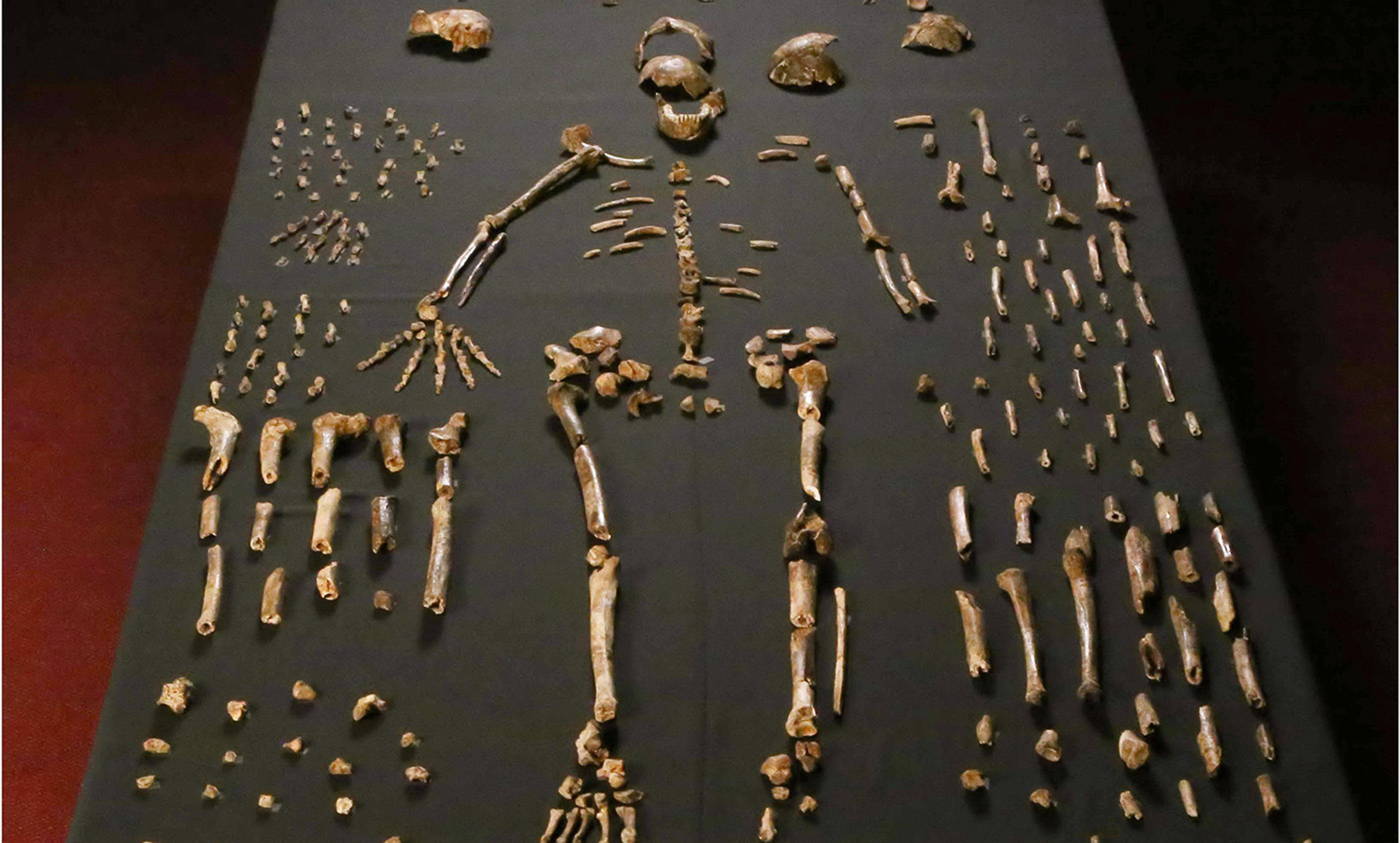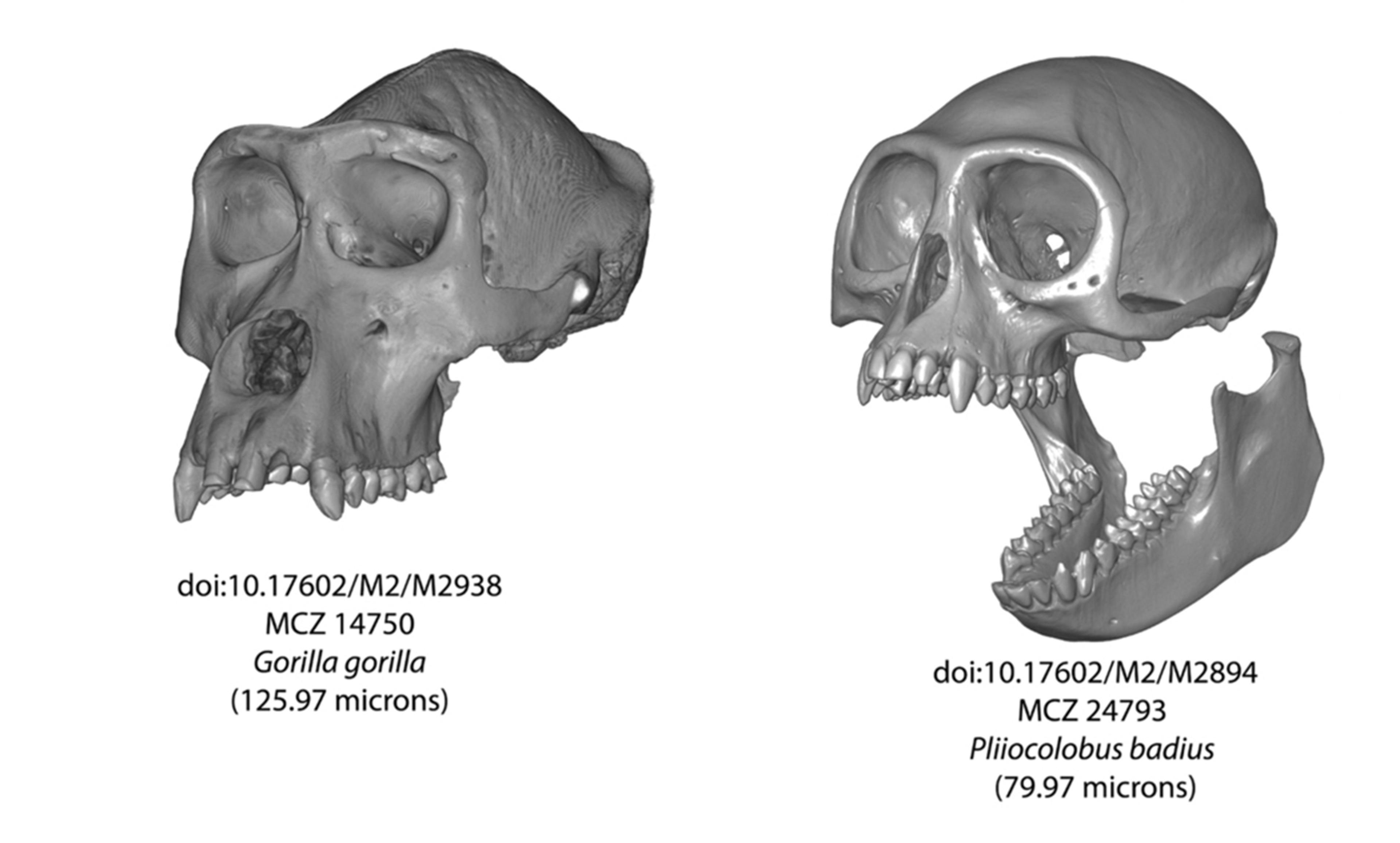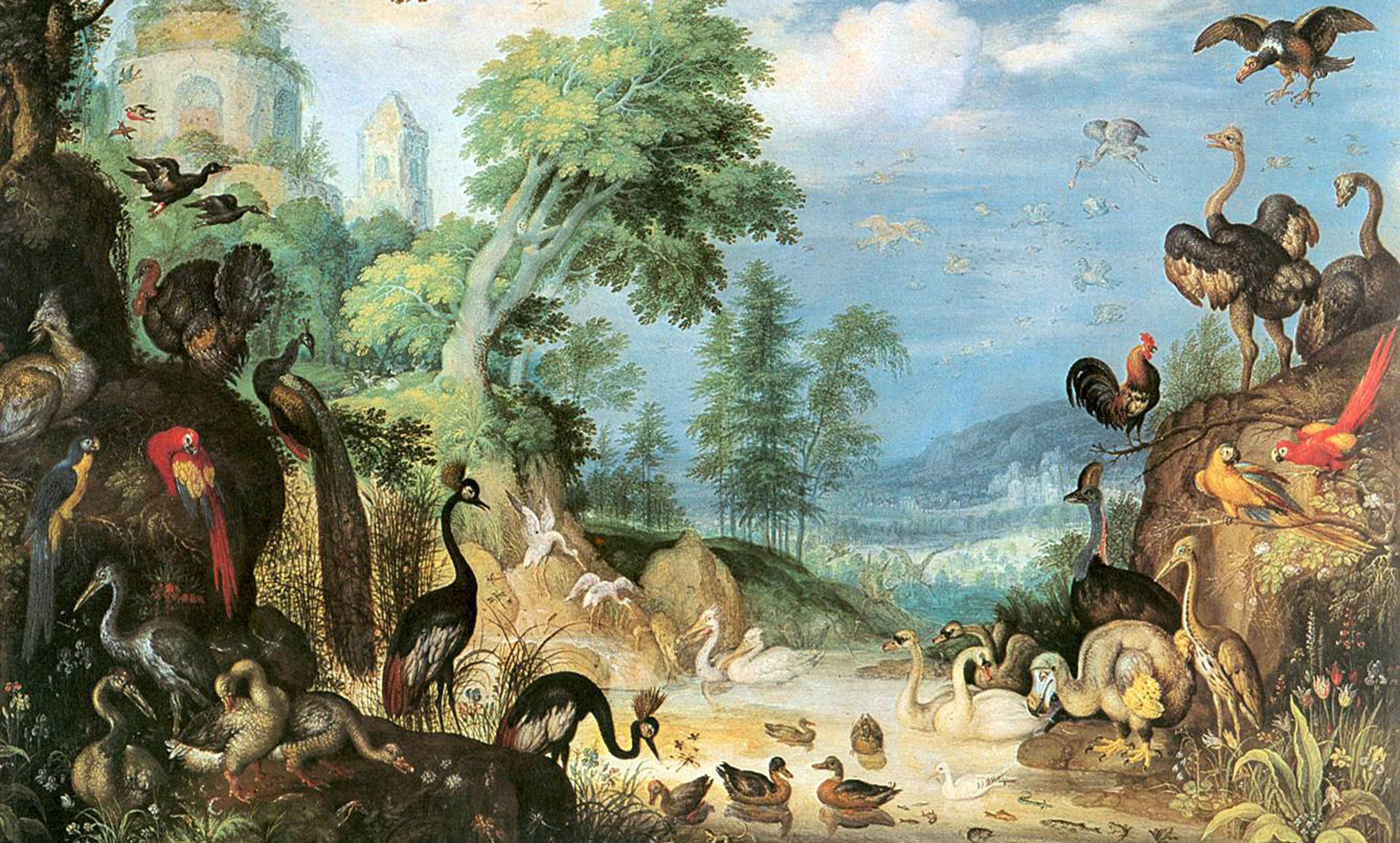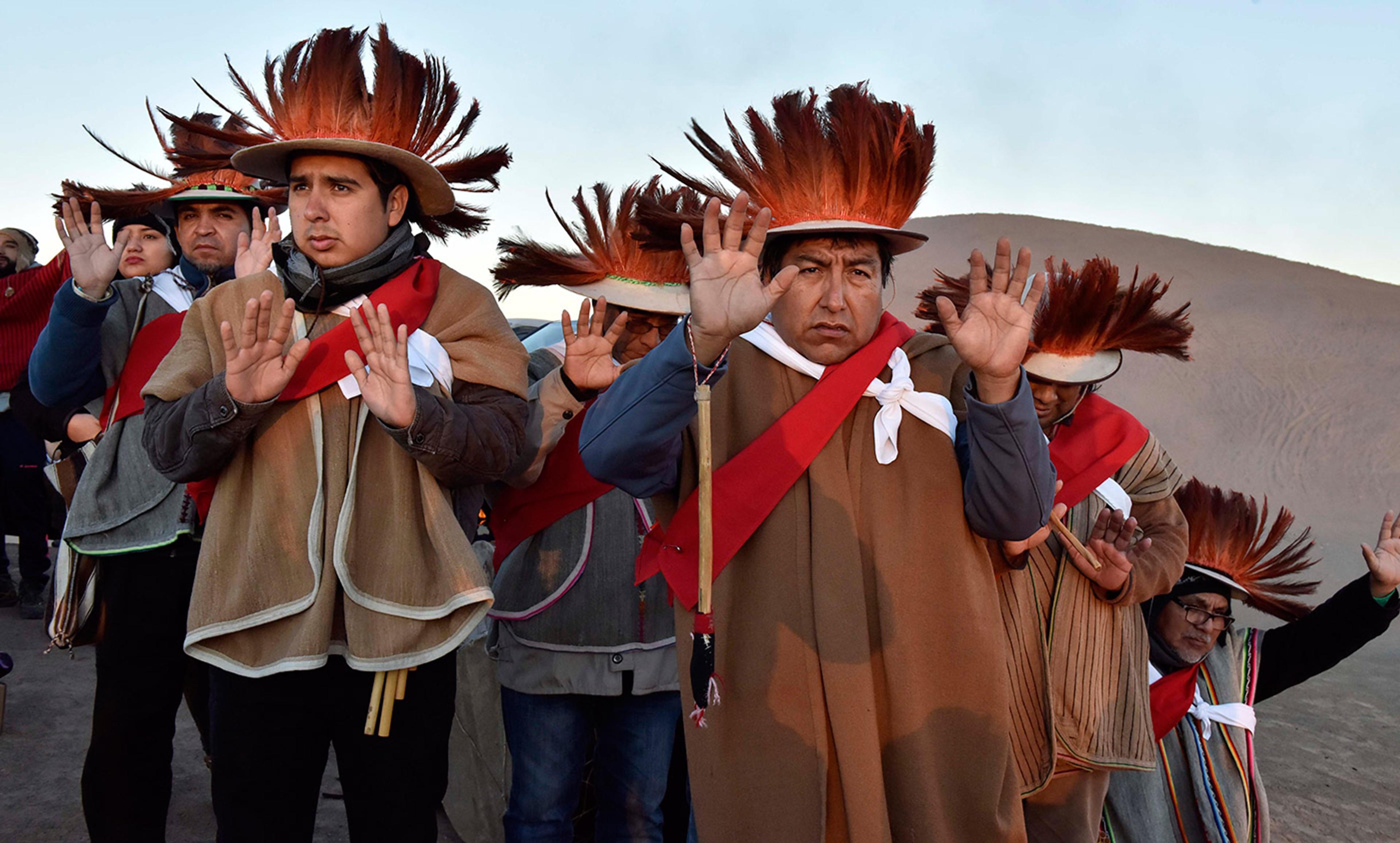The Lena River Delta in Siberia/LandSat NASA
Until recently, anthropologists drew the human family tree in the same way that my 10-year-old son solves a maze. He finds it much easier to work from the end to the beginning, because blind alleys lead with depressing sameness away from the start. In just this way, scientists once traced our own lineage from the present into the past, moving backward through a thicket of fossil relatives, each perched upon its own special branch to extinction.
This approach yielded the now-ubiquitous image of the human family tree, with Homo sapiens – the one and only living hominid – sitting alone, seemingly inevitable, at the top. It’s a powerful metaphor, but it also turns out to be a deeply mistaken one. Where once we saw each branch in isolation, DNA evidence now reveals a network of connections. From an African origin more than 1.8 million years ago, human ancestors flowed into different populations, following separate paths for hundreds of thousands of years, yet still coming together to mix their genes.
The recovery of ancient DNA from ancient hominins, first by Svante Pääbo’s research group at the Max Planck Institute in Leipzig and later by others, has started to bring unknown populations into view. Neanderthals provided a proof of principle, showing the recovery of whole-genome evidence from small fragments.
The first high-coverage genome provided the biggest surprise: a tiny piece of a finger bone from Denisova Cave, in southern Siberia, has shown us an unknown population (now called the ‘Denisovans’) who are as different from living people as from the Neanderthals. They make up some 5 per cent of the ancestry of living Aboriginal Australians, and a tiny fraction of more than a billion people across Asia and the New World.
Once geneticists knew what to look for, they began documenting more such lineages from the scattered traces of their genes in living people, even without DNA from ancient bones. Geneticists began to call these ‘ghost populations’, and quickly showed that many Africans, too, carry a legacy of unknown populations.
Even ancient genomes have ghosts within them. The Denisovan genome bears the traces of ancient mixture, not only from Neanderthals but with another even more divergent group – some speculate it might have been Homo erectus. Everywhere geneticists look, they see populations more different than any living people, mixing with each other in small fractions. It is no evolutionary tree. Our evolutionary history is like a braided stream.
How could science have missed this?
Anthropologists spent 100 years looking for signs of Neanderthal traits in later people, poring across old bones for tiny details. There were faint signs, especially in the earliest Europeans who lived more than 25,000 years ago just after the Neanderthals, but in reality bone anatomy is a poor reflection of population mixture even among living people. Many worked to test the hypothesis that fossil skeletons had a small fraction of Neanderthal ancestry, but these efforts locked the field in debate.
In the 1970s, geneticists noticed that humans are surprisingly inbred for a worldwide species. Other great apes – the chimpanzees, gorillas, and orangutans – each have much more variation, so much that today’s primatologists recognise two species of orangutans, and up to four species of chimpanzees and gorillas. These apes have deep histories, with populations separated for hundreds of thousands of years. By contrast, humans throughout the world look like refugees from a single small part of Africa. Some scientists even wondered if a massive volcanic eruption might have decimated our numbers.
But deeper gene sequencing and broader samples of people changed the picture. Our population did not originate in a catastrophe. When Neanderthals, Denisovans and ghost lineages, both inside and outside Africa, walked the Earth, their populations were each quite inbred, but collectively they were diverse, more like gorillas or chimpanzees than today’s humans. Across the past 200,000 years, these separate streams were swallowed up by the growth of one African branch of humanity. Humans spread through the world like a broad river delta, carrying slightly different fractions of the flow of ancient streams.
We don’t yet know what triggered the success of these ancient Africans. But we can see some ways that they benefited from mixing with distant populations. As they mixed, they picked up biological solutions first innovated and road-tested by distant populations. Already, we have found Neanderthal or Denisovan genes contribute to immunity, metabolism and proteins expressed in hair and skin. A gene derived from Denisovans has helped people adapt to the low-oxygen environment of the Tibetan plateau.
Just last month, two new studies found evidence of yet more Neanderthal and Denisovan genes active in human immune systems. Do we owe our allergies to cavemen, as some press headlines claimed? Probably not. But life outside the tropics does pose unique challenges, including a deficit of vitamin-D production, now known to strongly affect immunity. When Africans encountered these populations, any new immune tricks might have been valuable, especially those field-tested against local parasites. A talent for quickly adapting to new pathogens and parasites might even explain the initial growth of our ancestors within Africa, where they would have encountered pathogen diversity higher than anywhere else in the archaic human range.
The braided stream of human evolution matches with what we are seeing in other mammals. As geneticists have sampled more and more populations of wild animals, they are finding what has been known for our domesticated plants and animals for a long time: hybridisation and introgression of genes among species and distant populations is ubiquitous in the natural world.
Eastern coyotes now form a spectrum of populations with a high fraction of wolf and domesticated dog ancestry. European mallard ducks, introduced by hunters into New Zealand, rapidly hybridised with indigenous brown ducks, and now outbreed them. People long ago interbred Indian zebu with taurine cattle, creating arid-tolerant breeds that now are spread across most of Africa. What has changed most is our ability to see small fractions of mixture across whole genomes. Just in the last few years, scientists showed that grizzly bears well south into North America carry genes from polar bears, a legacy of ancient population mixture. Hominins are not exceptional; our mixing is the way that widespread mammals evolve.
If this is true, should we really be calling these populations different ‘species’ at all? After all, most of us learned that species are defined by their ability to interbreed. For ancient populations known precisely because they bred with humans, it feels wrong to use a term that leads people to assume they could not.
But anthropologists are just starting to face the question of how we define species with ancient DNA. Faced with the evidence of deep genetic histories of Neanderthals, Denisovans and the ghost populations of Africa, conservation biologists would not hesitate to classify them as species, just as they now recognise several species of gorillas. Before we can settle this, we might need to uncover more about the anatomy and behaviour of these ancient people, the consequences of their genetic and historical differences.
What inspires me most about the braided stream of our origins is what it implies about future discoveries. Tracing ghost lineages has already taken us further into the past than the 400,000 years of the current record for ancient DNA from hominins. Across the 7 million years or more of hominin evolution, there must have been dozens of such long-lasting populations, sometimes mixing and sharing adaptations with each other. As in the case of the Denisovans, we might already have tiny fossil traces of these ancient groups that we cannot yet recognise. Many more are out there, waiting for anthropologists to unearth them.
We are searching.
